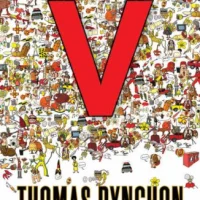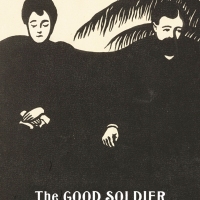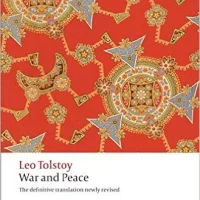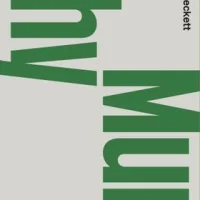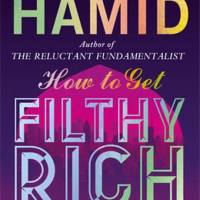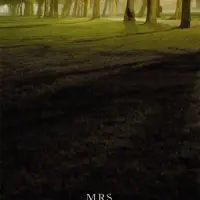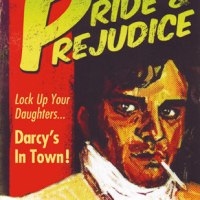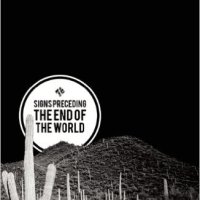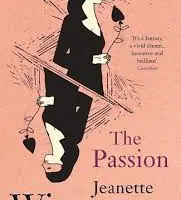A Dance to the Music of Time, by Anthony Powell
Twelve volumes, around 3,000 pages, those are daunting numbers. It’s not surprising that A Dance to the Music of Time isn’t as widely read as it should be. That said, it’s bloody good. It’s also, actually, very easy to read.
It’s been a few months now since I finished the series, enough time for my thoughts on it to settle a bit. What strikes me now, with a little distance, is the extraordinary consistency it shows in terms of themes and characters. There’s a logic to the sequence, a whole which is greater than the sum of the (individually excellent) parts.
Here’s a paragraph from the opening of the first novel. In it, an elderly Nick Jenkins (the sequence’s narrator) sees workmen gathered around a fire in a coal bucket, warming themselves against the winter.
For some reason, the sight of snow descending on fire always makes me think of the ancient world – legionaries in sheepskin warming themselves at a brazier: mountain altars where offerings glow between wintry pillars; centaurs with torches cantering beside a frozen sea – scattered, unco-ordinated shapes from a fabulous past, infinitely removed from life; and yet bringing with them memories of things real and imagined. These classical projections, and something in the physical attitudes of the men themselves as they turned from the fire, suddenly suggested Poussin’s scene in which the Seasons, hand in hand and facing outward, tread in rhythm to the notes of the lyre that the winged and naked greybeard plays. The image of Time brought thoughts of mortality: of human beings, facing outwards like the Seasons, moving hand in hand in intricate measure: stepping slowly, methodically, sometimes a trifle awkwardly, in evolutions that take recognisable shape: or breaking into seeminly meaningless gyrations, while partners disappear only to reappear again, once more giving pattern to the spectacle: unable to control the melody, unable, perhaps, to control the steps of the dance.
At the end of Dance, the centaur reference returns, and it’s not until the penultimate page of the final novel that we learn the circumstances in which Nick sees those workmen. The end of the series is the beginning, a literary Ourobouros capturing in its form one of its key themes – the cycle of time. In a sense, the paragraph above contains the whole work.
Dance is, however, about many things (chiefly old age, madness and death, as Hilary Spurling memorably put it). At the more obvious end, there’s the whole circle of life motif (cue swelling Disney music), in which generations arise to replace the ancients they find already populating the world on their arrival, grow older themselves until they become those they supplanted, and then are replaced in turn by yet newer generations.
Dance is also about the importance of the myth of self, of sustaining a personal narrative – a fiction one tells oneself about one’s own life so as to make sense of the world. It’s about too those who are able to force their personal narrative upon the world, to shape the world according to their own illusions, people who live the life of the will.
And then, of course, there are the characters. I recall most of their names even now, without needing to check them. They’re a memorable lot, Moreland, Sillery, Uncle Giles, Charles Stringham, Roland Gwatkin, Barnby, Pamela Flitton… Each of them is credible, yet ultimately unknown, we form views of them as Nick does, but a key point the sequence makes is that ultimately other people’s lives (and particularly their relationships) cannot ever be wholly understood. We see a fraction of each person we meet, we know them only as they are with us at a given time, which may not be how they are with others or even how they will be with us later. People don’t change, but circumstances do, presenting different facets of the same individual each time.
Among all these characters though, one stands out in particular. Kenneth Widmerpool. It could be argued that Nick is the Greek chorus to Widmerpool’s life, fate (authorial fiat) bringing them together time and again over the years so that Nick sees him from his earliest days at school through his business and political careers and his later entry into academia. Here is Widmerpool’s first appearance in the sequence:
By this stage of the year – exercise no longer contestable five days a week – the road was empty; except for Widmerpool, in a sweater once white and cap at least a size too small, hobbling unevenly, though with deterrmination, on the flat heels of spiked running-shoes. Slowly but surely he loomed through the dusk towards me as I walked back – well wrapped up, I remember – from an expedition to the High Street. Widmerpool was known to go voluntarily for ‘a run’ by himself every afternoon. This was his return from trotting across the plough in drizzle that had been falling since early school. I had, of course, often seen him before, because we were in the same house; even spoken with him, though he was a bit older than myself. Anecdotes, relating to his acknowledged oddness were also familiar; but before that moment such stories had not made him live. It was on the bleak December tarmac of that Saturday afternoon in, I suppose, the year 1921 that Widmerpool, fairly heavily built, thick lips and metal-rimmed spectacles giving his face as usual an aggrieved expression, first took coherent form in my mind. As the damp, insistent cold struck up from the road, two thin jets of steam drifted out of his nostrils, by nature much distended, and all at once he seemed to possess a painful solidarity that talk about him had never conveyed. Something comfortless and inelegant in his appearance suddenly impressed itself on the observer, as stiffly, almost majestically, Widmerpool moved on his heels out of the mist.
So enters Widmerpool, one of the most memorable characters I’ve encountered in literature, absurd, pitiful, slightly monstrous.
There’s a sense, of course, of middle class soap opera to it all. The novels trace the lives of various, mostly upper middle class, people as they grow up, marry, have affairs, pursue careers and so on. Part of the interest is who ends up with whom, for how long, what happens to so and so. That’s the same interest which keeps viewers tuned in to soaps, week in, week out. The difference, if there is one, is partly in the wider themes mentioned above that the novels contain, but also just in the sheer quality of the writing and the ambition of it all. Yes, it’s interesting to see what happens to Mark Members and how his early promise pans out, but there’s more to it than that. There’s a sense of timelessness embedded in time, of patterns recurring, individuals coming and going but the nature of human experience remaining the same.
The Anthony Powell Society on one of the pages of its website comments that no “… volume-by-volume summary seems to do justice to Dance, only make it sound like a soap-opera. In summarising such a complex and lengthy work one is bound to remove not just the great writing but all the nuances and the majority of the characters.” That’s very true, in fact having written a volume by volume summary I’m painfully conscious how true that is. Whole books have been written about the sequence, I’m not going to even attempt to address its complexities in this one blog post, but I do think it’s worth quoting what the Anthony Powell Society view “probably one of the best ever summaries of Dance.”
This twelve-volume sequence [A Dance to the Music of Time] traces a colorful group of English acquaintances across a span of many years from 1914 to 1971. The slowly developing narrative centers around life’s poignant encounters between friends and lovers who later drift apart and yet keep reencountering each other over numerous unfolding decades as they move through the vicissitudes of marriage, work, aging, and ultimately death. Until the last three volumes, the next standard excitements of old-fashioned plots (What will happen next? Will x marry y? Will y murder z?) seem far less important than time’s slow reshuffling of friends, acquaintances, and lovers in intricate human arabesques.”
[Robert L Selig; Time and Anthony Powell, A Critical Study]
I don’t use the term masterpiece much. A Dance to the Music of Time is though just that, a masterpiece. Yes, it’s daunting to start a series that long, that many volumes and pages. But if you read it as I did, a month or so between each book, it’s actually surprisingly easy. Time and again I found myself intimidated by the size of it all, but each individual novel was delightful, funny and clever and well written. If I read a bad book, I’d read a Powell afterwards to refresh myself. There’s no need to sit down and decide to dedicate yourself to reading them all, you just need to read the first, then if you like it (and you likely will) some time later the second. And so on. Anthony Powell took years to write them all, there’s no hurry to read them all. But, if you do, it will be worth it.
And well, I’ve not even touched on the connections with Proust, the use of Poussin’s painting and other artistic references, the often strong parallels between the characters and real individuals in Powell’s life (and with Powell himself). As I said above, whole books have been written on Dance, there’s a limit to what I can do here.
While writing this blog entry, I came across this article in Salon magazine (which contains spoilers). It’s an excellent piece, well worth reading if you’re already familiar with Dance’s storyline. And if you’re not familiar with it, well, there are far worse companions to be had as we take our own places in the dance and await our own turns for old age, madness and death…

